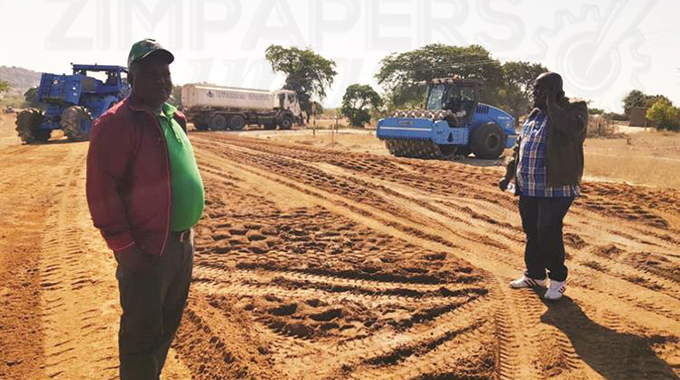Zim acts on locust outbreak

Sifelani Tsiko
Agric, Environment & Innovations Editor
Zimbabwe is mobilising resources to take adequate preventive measures following sightings of locusts that swept through parts of Namibia, hitting grasslands, trees and 50 000 hectares of crops recently.
Mr Shingirai Nyamutukwa, head of the Plant Quarantine and Plant Protection Research Services Institute, said recently that his department was mobilising resources to carry out effective locust forecasting and management of locust outbreaks in three provinces: Masvingo, Midlands and Matabeleland North.
Reports from Namibia say the African migratory locusts have damaged at least 50 000 hectares of cropland in that country’s Zambezi region.
The latest wave of locust invasions has hit nine regions and more than 500 square kilometres had been attacked in areas that include Kavango East and Kavango West, an area bordering the north–western tip of Zimbabwe.
Mr Nyamutukwa said they had not received any reports of locust sightings in the Victoria Falls and Jambezi communal areas in Matabeleland North.
“We are targeting to conduct surveillance in Chiredzi and parts of Mwenezi in Masvingo province, Chipinge in Manicaland, Gokwe North and South in Midlands and Hwange district in Matabeleland North,” he said.
A new round of locust outbreaks has so far been reported in Botswana and Namibia.
“It is important for us to share information and forecast the movement and behaviour of locust accurately to prevent large-scale infestations that can destroy vast swathes of cropland,” Nyamutukwa said.
Last year, there were locust outbreaks in Zimbabwe, Botswana, Namibia and Zambia that were dealt with.
Heavy rains have created conducive conditions for swarms to breed in these countries, forcing plant protection agencies to take steps to control the outbreaks.
SADC and partner organisations like International Red Locust Control Organisation for Central and Southern Africa (IRLCO-CSA) were working with the four countries to control the pest and protect people’s livelihoods.
FAO launched the Southern Africa emergency locust response and preparedness project which is funded by FAO’s Technical Cooperation Programme.
The UN agency is working with SADC and IRLCO-CSA to support the governments of the affected countries to control the locusts and the new project will increase the emergency capacity to support the four affected member states in their bid to prevent the pest from causing more damage.
The US$500 000 project will focus on emergency response in the locust hotspots and strengthen coordination and information exchange among the affected countries.











Comments